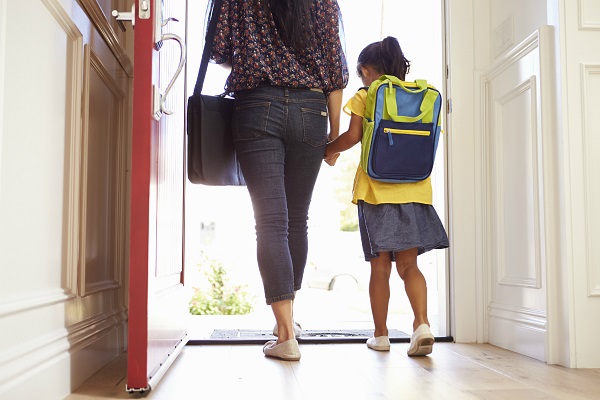Among the findings of the first installment of Tyton Partners’ School Disrupted 2022 series, Pandemic Driven Decline in K-12 Public School Enrollment Continues, is that a “seismic shift” has occurred in K-12 enrollment as some parents opt for homeschooling programs, charter or private schools to “combat learning loss and safety concerns.”
At the onset of the pandemic, public schools saw enrollment numbers dip while homeschool, learning pods and other school models drew interest. While many anticipated that enrollment would rebound as the public health crisis waned, that theory has not proven entirely true because parents have found value in the flexibility, adaptability and personalization that alternative options offer, according to the report,.
In collaboration with the Walton Family Foundation and the Stand Together Trust, Tyton Partners, which provides investment banking and strategy consulting services to the global knowledge sector, is expanding on its research from 2021 in a three-part series to find how families are navigating both traditional and alternative school models in the wake of the pandemic.
The second report in the series considers the rise of multi-site schooling and the third will look at factors that will influence enrollment trends in the future with a variety of student-centric school models gaining popularity. The reports draw on the results of two surveys in which more than 6,000 parents of K-12 students participated and present a glimpse of families’ changing preferences as well as the associated risks and opportunities for public schools.
Declining enrollment
Enrollment has been falling since 2019, with the trend accelerating now, according to Tyton. A 9 percent decline in traditional K-12 district public school enrollment nationwide from 44.3 million to 40.2 million students occurred between spring 2021 and 2022.
“Our most recent survey was conducted after COVID-19 vaccines were widely available and mask mandates had lifted. At this point, nearly all district public schools had welcomed their students to come together inside classrooms once again,” the report states. “This post-pandemic decline in K-12 public school enrollment suggests that this is no temporary anomaly but may instead reflect a tipping point.”
Consequences of these declines include decreased state and federal funding. Reduced revenue could also lead to fewer or lower-quality learning spaces resulting in more dissatisfaction with public schools, prompting more students to leave.
Dropouts, demographics (more students aging out of the K-12 system than entering) and deferments (parents opting for later starts to kindergarten) are three factors that contributed to persistent annual enrollment challenges before the pandemic. These factors were responsible for a decline of roughly 300,000 district public school students from spring 2021 to spring 2022, Tyton estimates.
“This decline, however, accounts for less than 10 percent of the shift in enrollment out of public schools from spring 2021 to spring 2022. The implication is that most students exited their district public schools to enroll in charter schools and private schools or pursue homeschooling as a result of their experiences during the pandemic,” according to the report. “Our analysis suggests that approximately 3.7 million students (and their families) made new decisions regarding their school choice in a single year.”
Private schools saw the largest increase in enrollment in that time period following by public charter schools and homeschooling.
Newfound interests
According to the parents surveyed, learning loss and safety concerns were the top drivers of school choice.
Issues with academic quality predate the pandemic, but recent challenges such as ineffective remote learning influenced parents to take action. The report found that parents prefer a student-centric learning environments —more than half indicated that they preferred environments where learning is happening in groups of 10 or fewer students, with multiple learning sites outside of the classroom and a flexible schedule based on student needs.
“These preferences are in direct contrast to the more traditional, one-size-fits-all public school model that typically offers learning in large groups, a single learning site, and a structured daily schedule,” the report’s authors observed.
Parents who more strongly preferred student-centric learning were more likely to take their student out of a public school.
Data from the survey also found that parents value traditional pillars of schooling, such as a licensed educator lead instruction and children having in-person interactions with peers on a regular basis.
More parents said bullying and gun violence were more crucial safety concerns than COVID health protocols.
Additionally, the analysis found that the political beliefs of parents did not have much impact on the reasoning behind changing their child’s school.
“Conservative, liberal, and moderate parents alike ranked academic quality and safety as their top motivations,” according to the report. “Furthermore, choice over how and what their child learns ranked sixth out of 11 reasons for changing schools. This middle ranking was true across the political spectrum; overall, only 7 percent of parents indicated curriculum choice was one of their top reasons for changing their child’s school since fall 2020.”





